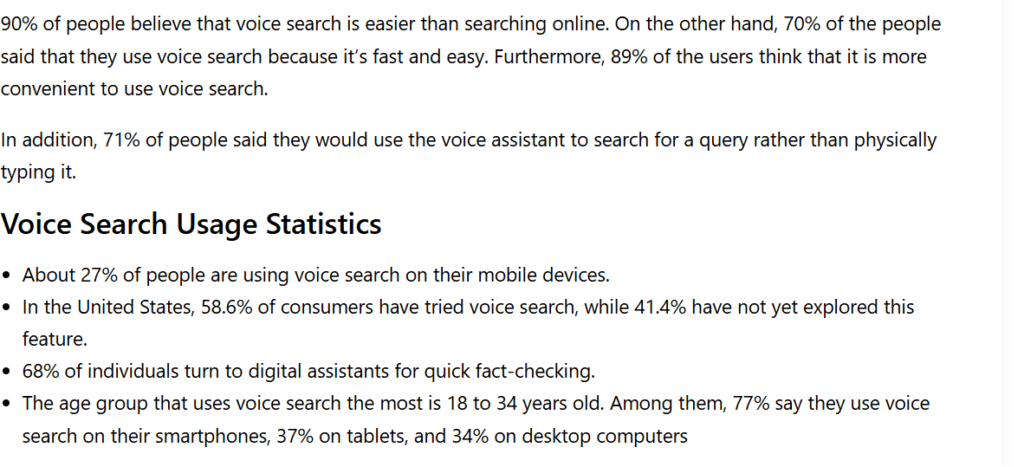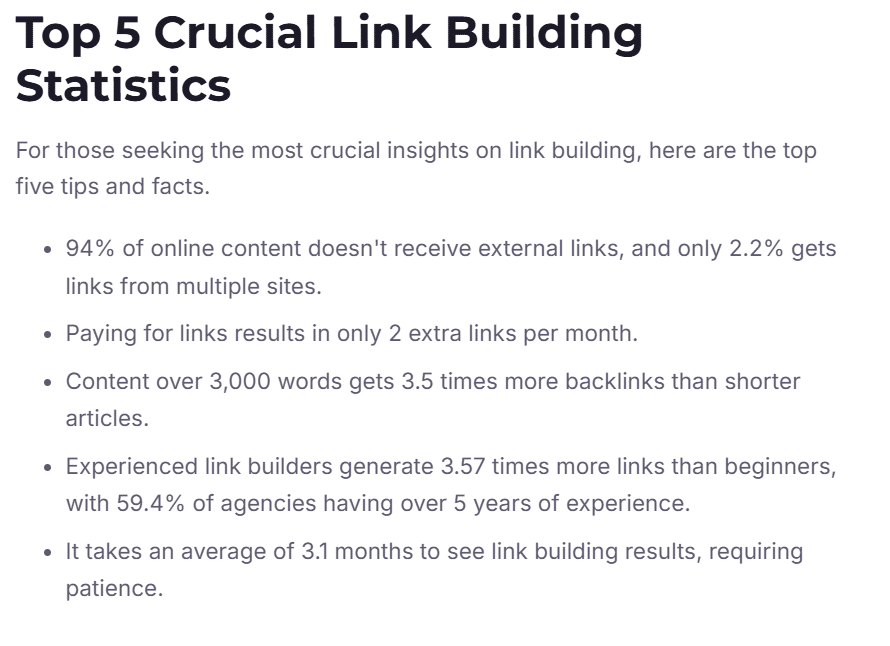Table of Contents

Voice Search is no longer the future it is present. It has taken every business to the next level.
But if your website or business is not searched in voice optimization, then your website is lagging.
In How To Use Voice Search Optimization 2025, I will share insights into voice search and how you can leverage your website and business.

Siri, dial my wife.
Hey, Alexa, turn on the oven, please.
AI has penetrated our lives. Voice search allows users to speak their queries instead of typing them into a search engine.
It is estimated that by 2026, there will be more than 150 million voice assistants in the United States alone.
It projected a worldwide installed base of over 27 billion units by 2028 (Source Statista).
With the introduction of Siri, Alexa, Gemini, and much more, you can surely drive more traffic to your site.
What is Voice Search Optimization?
Lets understand Voice Search Optimization.
It is the process of tailoring your website, content, and overall SEO strategy to rank higher and perform better.
As we have discussed earlier, most of the searches are occurs through voice search in the form of long tailed keywords.
For example, most of the people searches “best italian restaurant near me”, to get more specific result they usually ads name of place.
Even they asked for “Best Gynaecologist Doctor in Texas” and so on. The search of need never ends here.
Do you get my point?
But you might ask me that if its so much easy to use than why most of the websites and business never gain success?
Well there are many reasons and we will discuss it further.
First understand why Voice Search has increased in recent times.

Image source demansage.com
How People Use Voice Search in 2025
Users mainly ask for conversational queries that mostly contain questions like “How do I..” or “What is the best…” or even any medical emergencies quetions are frequently asked.
This search focused on local intent, eg “best coffee shop near me” or “best coffee shop in Nagpur”.
These queries are nothing but a set of questions that are focused on long-tail keywords.
The rapid increase in use of speakers like Siri, or Alexa, or Gemini is the main reason why voice search is booming rather than typing in mobile.
Hot tips:
Always write in a conversational tone.
Focus on LONG-TAIL Keywords.
And answer questions directly within your content.
Why Local SEO Matters For Voice Search
Loacl searches mostly consist of local languages. They are widely used in voice searches. The main reason for using natural language
So, when users ask, “Where is the best coffee shop in Mumbai?” (मुंबई में सबसे अच्छी कॉफी शॉप कहाँ है?)
Start crafting your content in a conversational tone.
Don’t use incomplete sentences. Like if you are a fan of writing shortcuts, this won’t work here at all.
Eg:- Best Italian restaurants NYC.
Here, NYC would not understand clearly. Instead, use it as “Which is the best Italian restaurant in New York City?”.
A simple and well-crafted sentence will always work here.
Essential Tips:-
Ensure your business is accurately listed in Google My Business.
Prefer to use structured data that helps search engines understand location and offerings.
Don’t forgot to include geographic information in your content.
And, keep encouraging your customer reviews to boost your local rankings.
Create Content for Featured Snippets
In recent times, featured snippets have played crucial roles in SEO. Because, it directly influenced with search engines and how websites gains visibility.
So, What are Featured Snippets?
They are the concise answers that Google displays at the top of the search results.
Then how to target Featured Snippets in 2025?
Simple: frame your content to answer common questions that are frequently asked.
Follow these easy steps.
Use H1 to H6 structure to organize your information.
Try to provide concise answers. Those answer should be 40-60 words long.
Use lists, tables, and bullet points to make your content scannable.
Improve Page Speed and Mobile Optimization
Speed thrills, but it kills. We might have seen while driving through highways. But in the world of the internet, this sentence works in reverse.
If your website lacks in speed, you will lose traffic fast.
So, are you interested to loose your valuable traffic? Remember, a slow-loading website can result in a poor user experience.
It follows this mechanism. Poor user experience leads to high bounce rates that lead to lower search rankings, and in the end, one day your website vanishes.
The recent stats show why speed matters

Image source explodingtopics.com
Things to remember to improve speed
Ensuresd that your pages load quickly on mobile devices.
Focused on Image size prefer to use WebP or SVG format of images.
Test your website on Google PageSpeed Insights to keep an eye on your page load times.
Use Structured Data (Schema Markup)
Do admire a messy website that has information but is messed up. I think you won’t like.
But why?
Because search engines won’t understand the context of your content.
See, search engines feed on your schema markup.
In the case of voice search, there is a great chance that your website will be selected as a featured snippet.
Focus on FAQ Schema that are ideal for pages with frequently asked questions.
If your article consists of any guides, then focus on how-to schema, which perfectly blends with this kind of article.
How do you implement that schema markup?
Follow these steps:-
Simplify the process of adding schema to your pages. Utilize Google’s structured data markup helper.
Use tools like Google Search Console and Google Rich Result Test.
Focus on Long-Tail Keywords
SEO is very fascinated towards long-tail keywords. Even Google has mentioned its merits in its slashing updates.
Long-tail keywords are conversational search phrases that capture specific user intents. Example, best SEO tips for blogging in 2025.
They are the set of simple yet powerful words that highly focus on user intent on SERP.
If you include those long-tail keywords in your content, it has great chance that your content will rank in the top as it resonates with audience needs.
So, how to find and use them?
There are ample of tools in the market like Ahrefs, SEMrush, or AnswerThePublic to discover long-tail queries.
For getting more specific, analyze “people als ask” section. It will help you to insight from related questions on Google.
Long-tail keywords mostly use natural language (local language). Use them wisely and avoid overstuffing.

Image Source Embyo.com
Leverage FAQ Pages
You might have read many FAQs in the article. But have you ever thought for a second why it is added always in the article?
The reason is simple. Voice search.
Yes, FAQs are ideal for voice assistants that pull direct answers from the content.
It mostly highlight the summary of your article.
This helps to make your reader intrigued by your content.
How to create an effective FAQ page?
Research common questions that are mostly asked in Google relevant to your content. Use AnswerThePublic tool.
Keep your responses brief and informative. Always provide clear and concise answers.
Dont forget to add FAQ schema markup. Always update your FAQ regularly with fresh content and interlink your FAQ with relevant blog post to boost the internal linking.
Build Authority with Backlinks
Backlinks. One word but yet powerful. Your entire website survival lies on it. Google mostly supports to those website that has great backlinks.
See, high-authority websites are most likely to be trusted by search engines and frequently feature in voice search results.
So, how do you build backlinks?
The most common and powerful practice is guest posting. You can write guest post by providing impactful information to the readers. You can even invite the same person who share the same niche.
Focus on quality rather than quantity. Provide an insight, truthful, raw, authentic and utterly unfiltered information to gain the trust in the audience.
Most of the website has collapsed due to their copy content. This helps to attract links naturally.

Monitor and Adjust Your Strategy for 2025
Monitoring your strategy and adjusting as per needs is always a good move.
But why?
You see, voice search trends and algorithms are constantly evolving according to updates. So keeping an eye open allows you to stay ahead in the rat race.
Also, you can keep your content updated if new stuffs are introduced.
Here are the tools that can help you for monitoring. Google Search Console, SEMrush, Moz, Ahrefs, and Ubersuggest.
This tool helps to track your performance and discover voice search queries. But remember, you should be flexible in your strategies; never rely on the same strategy.
Conclusion
As the world of the internet is changing and SEO is implementing new strategies. Google is also imposing new updates to kill new websites. So, surviving in the jungle requires multiple approaches. It’s like Darwin’s Theory about survival of the fittest. So considering this keep evolving as per needs.
Exclusive Exercise
VOICE SEARCH OPTIMIZATION QUICK WINS
1. Claim & Optimize Your Google My Business Listing
Verify your listing on Google My Business
Update accurate business information (address, hours, phone)
Upload high-quality photos of your business
Encourage customer reviews to boost local credibility
2. Revise Your FAQ Pages
Identify the most common questions from your audience
Write clear, concise, and direct answers
Implement FAQ schema markup on your pages
3. Integrate Local Keywords
Research local keywords relevant to your business
Update headlines, metadata, and content with local terms
Include city, region, or neighborhood names throughout your content
4. Implement Structured Data (Schema Markup)
Use Google’s Structured Data Markup Helper to add schema
Apply FAQ and How-To schema on relevant pages
Test your markup with Google’s Structured Data Testing Tool
5. Boost Page Speed & Mobile Optimization
Compress images and minify your website code
Test your page speed using Google PageSpeed Insights
Ensure your website is fully optimized for mobile devices
6. Focus on Long-Tail and Conversational Keywords
Use tools like AnswerThePublic, Ahrefs, or SEMrush to find queries
Incorporate natural, conversational long-tail keywords into your content
Avoid keyword stuffing—aim for readability and relevance
7. Monitor & Adjust Your Strategy
Set up Google Search Console to track voice search performance
Regularly review analytics and performance metrics
Update your strategy based on emerging trends and data insights
SAVE & REVISIT THIS CHECKLIST REGULARLY!
Conclusion
As the world of the internet is changing and SEO is implementing new strategies. Google is also imposing new updates to kill new websites. So, surviving in the jungle requires multiple approaches. It’s like Darwin’s Theory about survival of the fittest. So considering this keep evolving as per needs.

